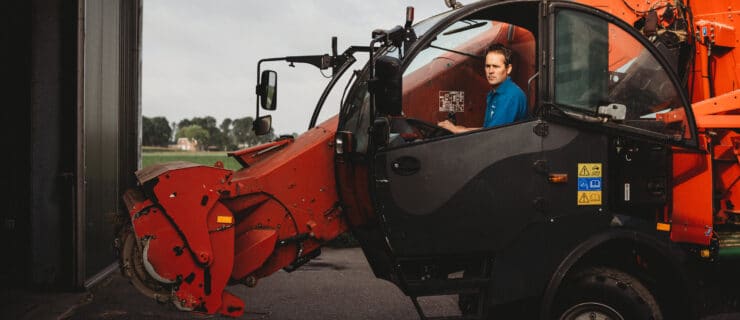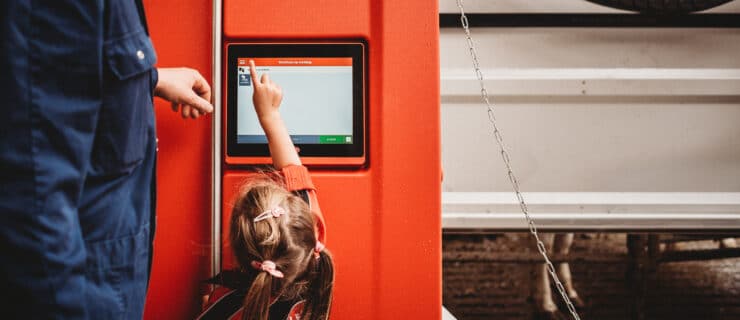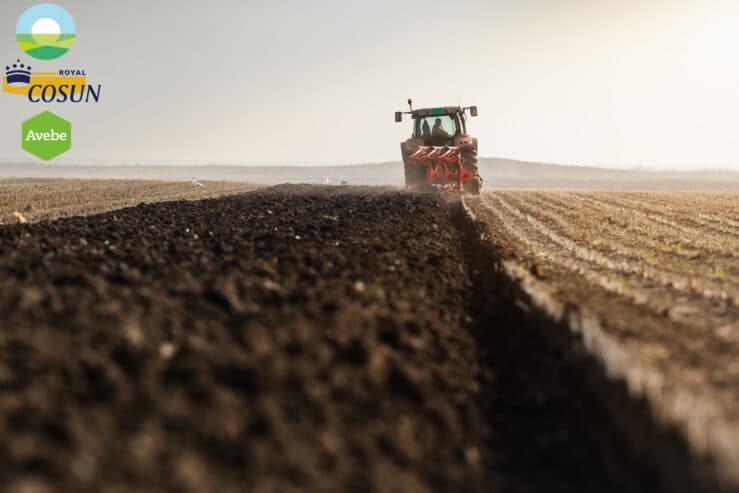JoinData is an independent data platform set up to give farmers control over their data. FrieslandCampina, Agrifirm and CRV, among others, are members of JoinData as farmers' cooperatives. But is this really something farmers want? And what are the pros and cons of data sharing? Which apps and innovations can farmers make good use of? Director Sener Celik talks to various farmers in the Netherlands to answer these questions.
Eline Vedder is the most famous female farmers in the Netherlands. She regularly appears in the media and even made it to Sunday with Lubach. Last summer she initiated the #Doesnormaal campaign, in response to the occupation of a pig farm by animal activists.
Sener: Many farmers do not know that they use JoinData, for example when filling in the Annual Nutrient Cycling Assessment. In doing so, they give permission for sharing data. Are you aware of that?
Eline: Yes, I am. But I love data and numbers. I think that’s because of my background as a mechanic. I think that by using data, we can much better substantiate why we should or should not pursue certain policies. Instead of trying something, and then finding out later that policy does not work, as is the case with phosphate legislation, for example.
Sener: One of the spearheads of JoinData is: giving farmers the right of disposal of their data. We want to bring the control and the benefits of the data back to the farmer.
Eline: That sounds good. I think that in the agricultural sector, we should be much more on top of our data, because data is the new gold. As a sector, we realize this far too little. But how does JoinData make sure that control ends up in our hands?
Sener: I’m trying to convince commercial parties within the agricultural sector to join us. This means that the farmers who are customers of those suppliers will have the right of disposal of that data. They can decide for themselves what data the supplier may use and for what purpose.
Eline: And will third parties have access to that data?
Sener: We want to attract start-ups and companies that use the shared data to develop useful apps for farmers. We already see great examples in the field of animal health and invoicing. The more parties we bind to, the more of those apps will emerge. What sort of apps could you use on your farm?

Who is Eline Vedder?
BornBorn 1979 in Dordrecht
EducationGraduated Mechanical Engineer University of Twente
CareerEmployed at Unilever, among others
Other functionsEmployed at Unilever, among others
Eline: I would like to give my cows more freedom when it comes to grazing. Now I lock them in the meadow, to make sure I comply with the standard. With a smart app, I would be able to ensure that cows can choose for themselves whether they are in the barn or in the meadow. And I would like an app with which you can predict diseases based on sharing historical and genetic data. This saves veterinary costs, antibiotics and contributes to animal welfare.
Sener: Are there other apps that could be useful to you?
Eline: I would also like an app that tells me exactly how the soil and crops on my plots are doing. At the moment, this is guesswork: today I’m going to mow because the sun is shining and the grass looks like it needs to be mowed. But is today really the best day? I am looking forward to the day when I will be able to see exactly how much and where to fertilize and use crop protection, because a drone can clearly see how the different crops are doing.
Sener: You clearly see the benefits of data sharing. But there are also farmers who are reluctant. They’re afraid the NVWA or other companies may be watching.
Eline: I definitely understand that. Everyone is familiar with the phenomenon that you book a holiday online, and all of a sudden advertisements for suitcases appear in your Facebook profile. You sometimes wonder: who makes money off us and in what way? And so: if our farming data is shared, who gets their hands on it?
Sener: JoinData itself has no access to the farmer’s data. We only ensure that the data flows, moves, is shared. And we only do this after authorization from the farmer, whereby the farmer indicates what the data may be used for; the purpose limitation. When farmers share data in the old-fashioned way, via delivery conditions, that purpose limitation is not always clear. This means that, as a farmer, you don’t know exactly what the data is used for. As a farmer, you have much more control over data shared via JoinData.
Eline: And how safe is that data with you?
Sener: We treat the farmer’s data as personal data, which is what our security requirements are designed for. We employ a data protection officer, and we are independently audited.
Eline: We farmers have so many big files to deal with. Think of circular agriculture, the climate agreement, animal health, land use, biodiversity and above all: the nitrogen file. What we need is convenience. Currently, after buying back my own data, I have 20 apps on my screen. I have to interpret all the information from those separate streams myself, while you can’t see those files separate from each other at all. And all those permissions and passwords I have to change every six weeks drive me nuts.

Sener: That convenience in the field of permissions already exists. At My JoinData, you have all the permissions at your fingertips, and you control them with a single password. Moreover, you also have 1 place for all your contact numbers..
Eline: That’s already a big win. Farmers have to deal with a lot, and it will always be that way. Many farmers have to decide if they are going to change their course. It would be nice if apps were developed that could make farmers’ decisions easier and ultimately generate money.
Sener: What do you think is the biggest risk of data sharing?
Eline: Numbers always require context, otherwise they can paint a distorted picture. An example is RTL’s WOB request regarding the organic sector. They revealed that half of the farms were breaking the rules. That sounds alarming, but in reality, the investigation also included very small administrative errors, such as writing down the wrong number on a box. So you always have to look very critically: what does a figure really say? It’s just like with everything in life: if there are opportunities, there are threats that come with them. We must seize these opportunities while facing the threats and dealing with them wisely.




The milking robot collects data and sends it to the milking robot company. The feed supplier, breeding farm, the tractor company and various other parties. The farmer always gives separate authorizations for this, which means they have no overview. What happens to all that data? That is unknown.
JoinData wants to bring all those separate data streams together and give farmers back control. No more separate authorizations, but one authorizations platform on My JoinData. JoinData credo is: The farmer at the helm.
If all data streams are accessed through one place, other companies will be able to develop smart apps in the future to help farmers with their business operations. Our goal is: more convenience and lower costs by bundling data.